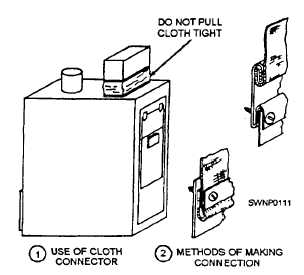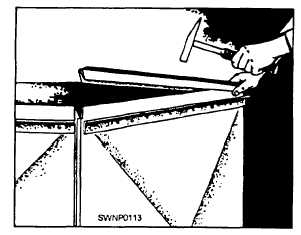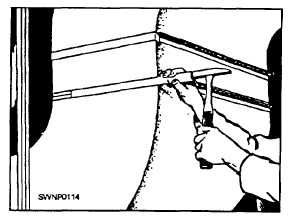
Figure 2-94. - Flexible duct connection.
combining two S slips and two drive slips (fig. 2-95). S slips are first placed on two opposite edges of one of the sections or fittings to be joined. These S slips are applied to the widest dimension of the duct (fig. 2-96). The second section or fitting is then inserted into the slips, and the two sections are held together by inserting drive slips along the opposite sides [fig. 2-97). After the drive slips are driven home, they are locked in place by bending the ends of the drive slip over the comer of the S slips to close the comer and leek the drive slips in place (fig. 2-98), completing the joint shown in figure 2-99.

Figure 2-96. - Placing S slips for S-and-drive connection.

Figure 2-97. - Inserting drive slips.
HANGING DUCT FROM PURLINS OR BEAMS
Most of the ductwork Steelworkers install, modify, or repair are in pre-engineered buildings or repairs to more permanent type of ducting in buildings, such as barracks and base housing.
The most common installation method is hanging the duct from purlins or beams in the hidden area of a

Figure 2-95. - Methods of connecting ducts,

Figure 2-98. - Bending drive slips to complete the Joint.
roof or below a ceiling. Figure 2-100 shows one such system when the duct is running parallel to the structural member. These systems require that angle be installed between the beams so that the hanger straps can be installed on both sides of the duct. Normally, 2-inch by 2-inch by 1/8-inch angle is
Continue Reading